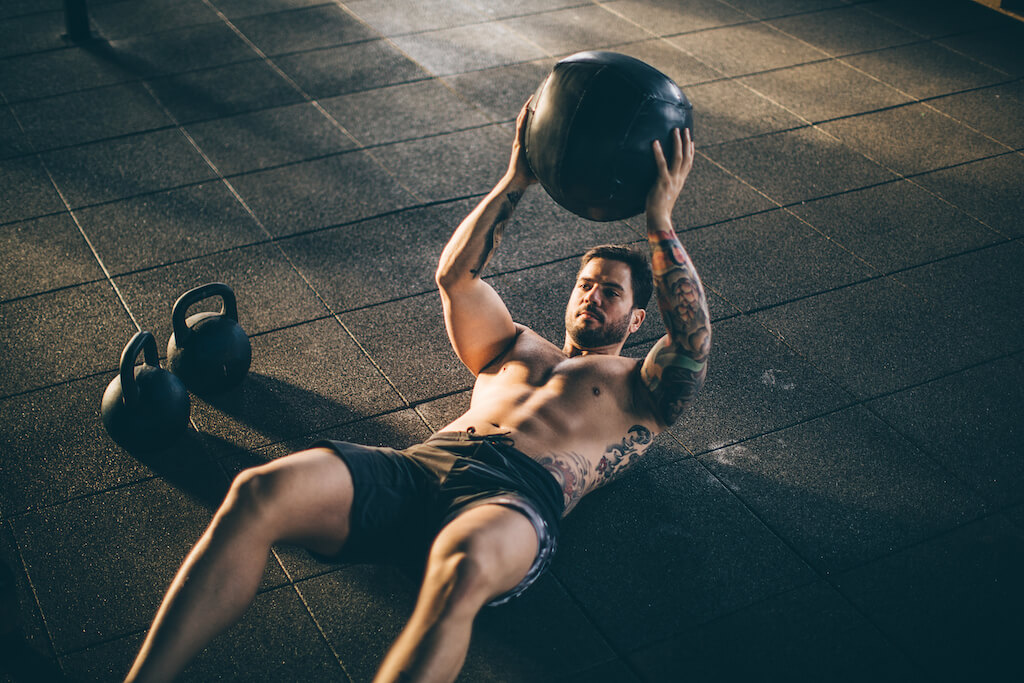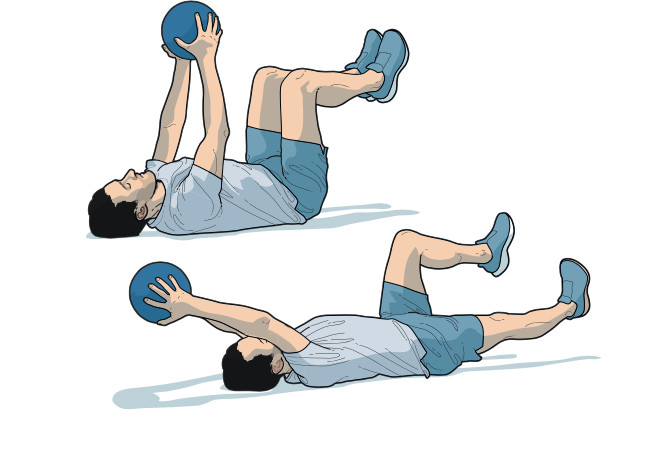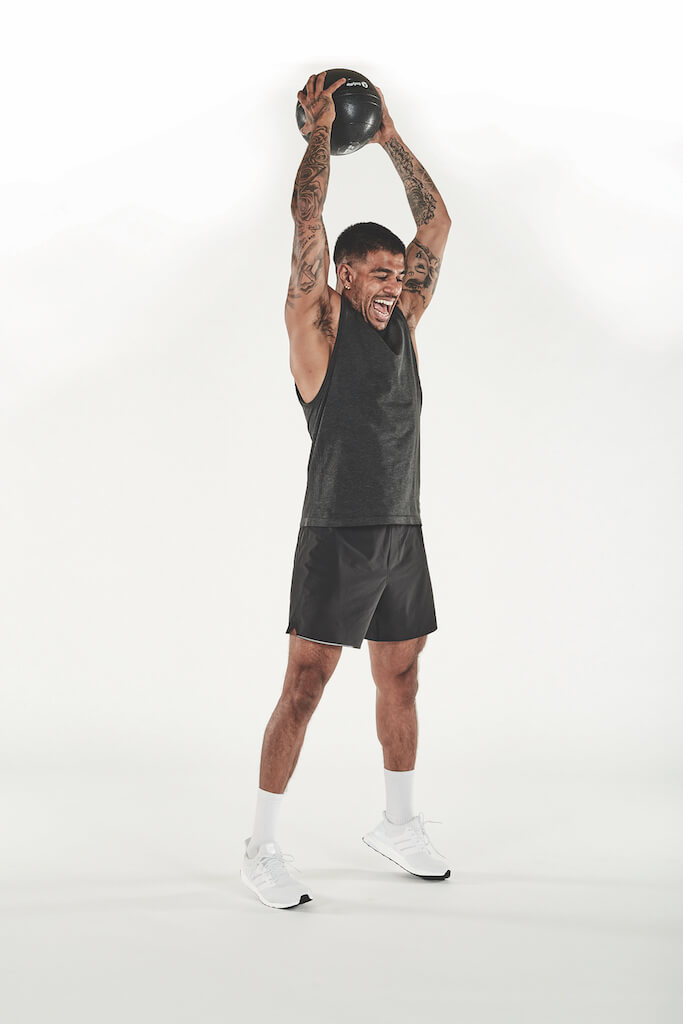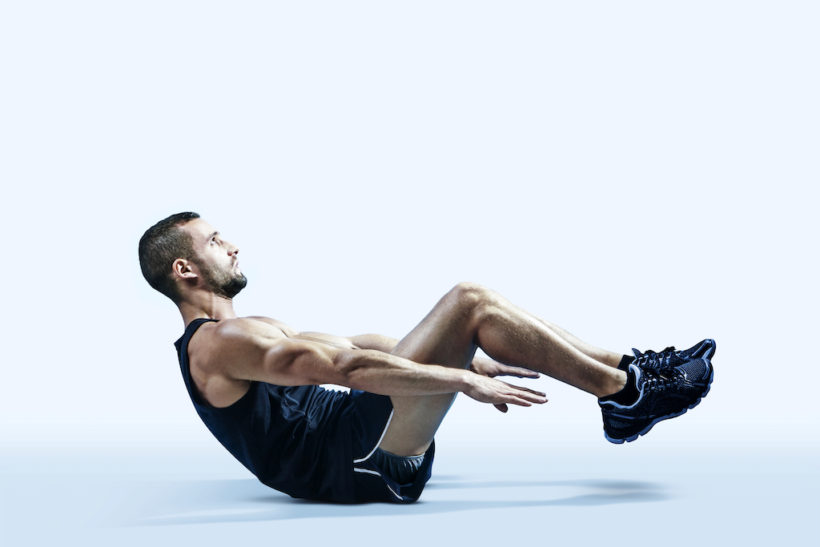Learn how to craft a strong core of steel and reap the strength, stability and aesthetic benefits with these top tips on targeting your abs
Your abdominals are a collection of important postural muscles. They’re responsible for flexing your spine forwards, assisting with breathing, stabilising the torso during exercise, and protecting your internal organs from impact.
When people talk about the ‘abs’, they’re often referring to the rectus abdominis, a paired muscle that runs vertically on each side of the front of the abdomen, separated down the middle by a band of connective tissue called the linea alba, or ‘white line’. It’s this line, and those that run horizontally across the muscle group, that creates the ‘six’ distinct parts of a six-pack. (In fact, there are four vertical sections, but the bottom pair are just above the pubic bone and are therefore not typically visible.)
The abs are like every other muscle group in that they need to be targeted directly from a variety of angles for maximum muscle growth. Heavy compound lifts – the squat, deadlift and overhead press – are among the best moves. This is because they work your body from top to toe and force your core to work hard.
And a strong core is something everyone can benefit from. It provides a stable base for improved strength and performance in all areas of training.
Here are 10 quick tips for targeting your abs and building a strong core…
10 Tips To Build A Strong Core

1. Be mindful of every move
“Before you start your first crunch, activate your abdominals by feeling them tighten (drawing your belly button down to your spine). Then, bring your shoulders off the floor for the first rep and repeat,” says Sam Yo, former Buddhist monk turned trainer and UK Peloton instructor.
“My years in dance training – contracting and releasing the core to initiate movement – really helps me with my personal core training. You’ll never see a professional dancer with a weak core. Take your mind into each muscle movement. There is more to be gained in the details when moving your body from point A to B.”
2. Stretch out
The Pilates double-leg stretch, the dynamic side bridge, an isometric side bridge and the Pilates hundred are among the best drills for producing increased deep muscle activity. This is according to researchers at Auburn University Montgomery in Alabama.
They set out to determine the effectiveness of abdominal exercises using a test known as electromyography. Their findings were published in the American College of Sports Medicine’s Health and Fitness Journal.
3. Go for T
“An exercise like the T press-up is perfect for developing stability. It provides stress, but there is little to no movement of the spine,” says Alastair Crew, head trainer at BLAZE Birmingham.
“Bracing your core, by activating the deep stabilising muscles around the spine, is essential to create the intra-thoracic pressure or intra-abdominal pressure required.”

4. Up the ANTI
US research shows that a range of core exercises that include anti-rotation moves are great for building both strength and stability. An anti-rotation movement is any that involves contracting your core and holding it completely still while keeping the rest of your body within just one singular plane.
“Whether it’s anti-rotation, anti-extension or anti-lateral flexion, exercises that prevent movement are key to strengthening the core,” says Crew. “The renegade row is a great exercise to incorporate into your routine, as it must be performed without moving the spine or pelvis, without any rotational or twisting movements.”
Try this: The Core Workout For A Bullet-Proof Body
5. Box clever
“Classes that include boxing and mixed martial arts are also ideal for engaging your core,” says Crew. “The core is the vital link between the lower and upper body, and is the key to executing a punch or a kick. You will be transforming the force from upper to lower during kicking, and lower to upper for punching.”
Strengthening the core in this way has the reciprocal effect of making you a better fighter, as a strong core will improve strike and kick strength, as well as endurance, coordination and balance.
6. Hit reverse
“The reverse crunch, where you bring your hips off the floor and knees up towards your shoulders, is a good exercise to hit the lower core,” says Sam Yo.
The reverse crunch gives your core a test without forcing you to take up the same regular crunch position you’ve probably done a thousand times before.
“With this move,” adds Yo, “the mind-muscle connection is even more important to practice, so you don’t just rock and swing your knees up.”
7. Bank the plank
“The plank, where you brace the core to keep the spine and body aligned, is a classic stabilisation exercise,” says Yo. Try adding a band step-out for anti-rotation, keeping the hips and shoulders squared. Once you’re comfortable advancing to that, it will add stability to the sides of your core.”
Including a high plank and side plank in your routine will work other areas, too, and add variety to an otherwise static session.
For some planking inspiration, check out these 5 Dynamic Plank Variations

8. Be more dynamic
“Dynamic core exercises are also good for variety, but more crucially help take core strength development to an advanced level,” adds Yo. “Exercises like mountain climbers, ball slams and sledgehammer swings will add explosiveness and athleticism to your core routine.”
The ability to move the body quickly while keeping the core engaged will help prevent injuries in your training and everyday life in the long-term.
Try the following tips to ace the ball slam exercise and build a strong core.
How to do a ball slam:
- Hold a medicine ball in two hands and stand with feet shoulder-width apart.
- Raise the ball high above your head, rising up on to the balls of your feet.
- Contract your core as you powerfully slam the ball into the floor in front of you.
- Catch the ball as it bounces up and continue into the next rep.
- Do 5 sets of 30 seconds as an end-of-session finisher.
9. Stay single
“Many sports incorporate a combination of bilateral lower-body movements (running) and unilateral upper-body movements, such as throwing or pushing with a single arm,” says Crew. “As such, in order to better prepare the core, it is imperative to include a similar variety of movement into your training.
The dumbbell snatch is a good example of both a bilateral leg and unilateral arm exercise. This is a full-body, power-orientated movement.
Related: Build Strength For Running With This Six-Move Circuit
10. Make every rep count
“A good core workout should be short, focused and no longer than ten minutes,” says Sam Yo. “How you sequence core exercises will have an effect on how much you get from your routine. The abdominals are linked together, so the whole of the core will fatigue as you work each section.”
Start with the hardest drills and work your way to the easiest exercises in order to gain the full benefits. Remember the amount of reps you do will be wasted if you don’t master core engagement, but 10 to 15 per exercise, to get the hypertrophy kicking in, is ideal.
Words: Rob Kemp







